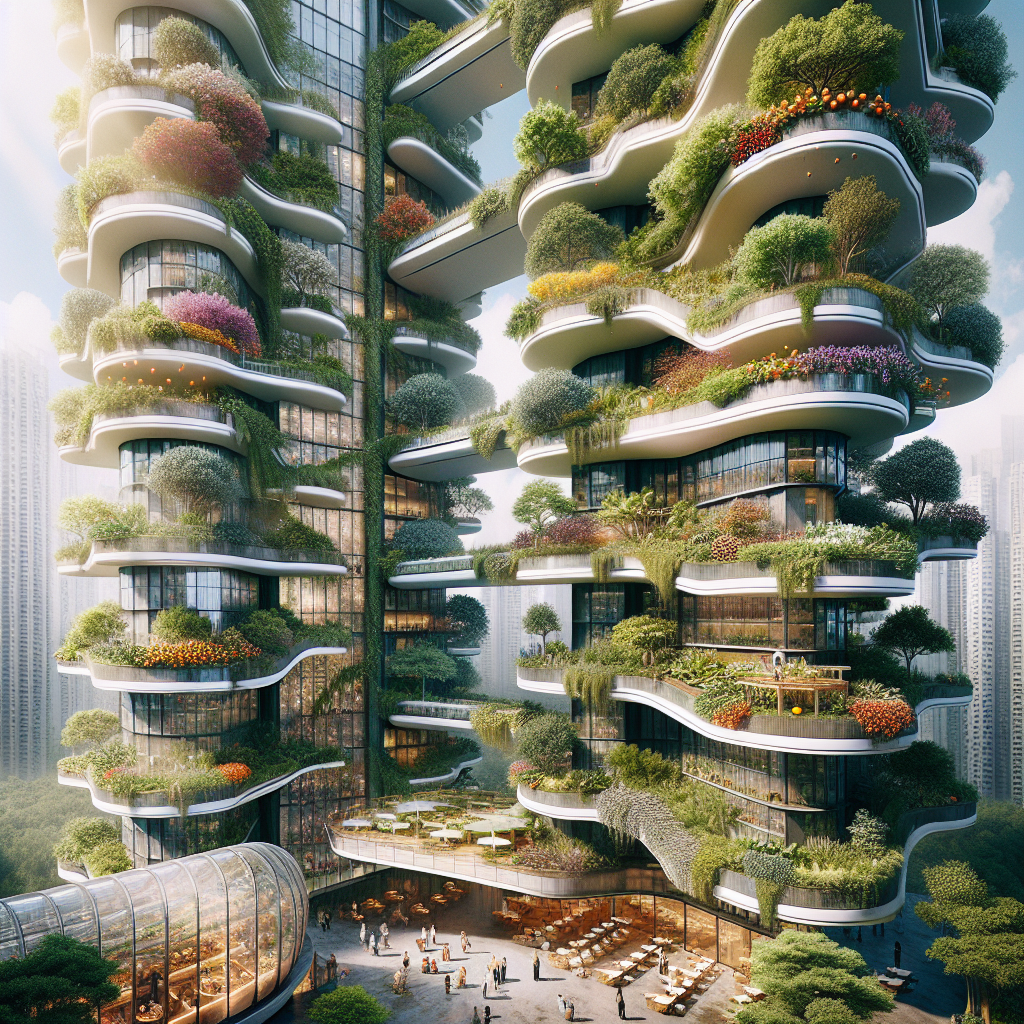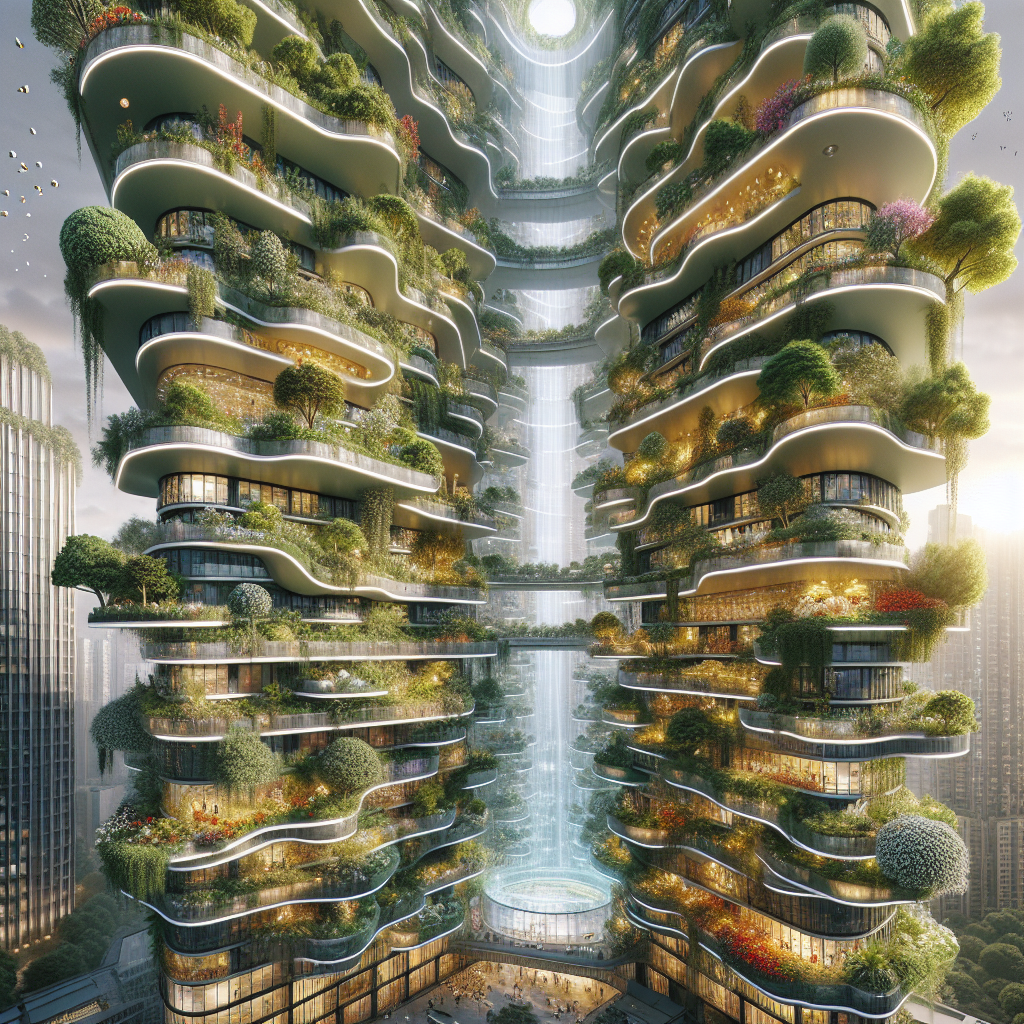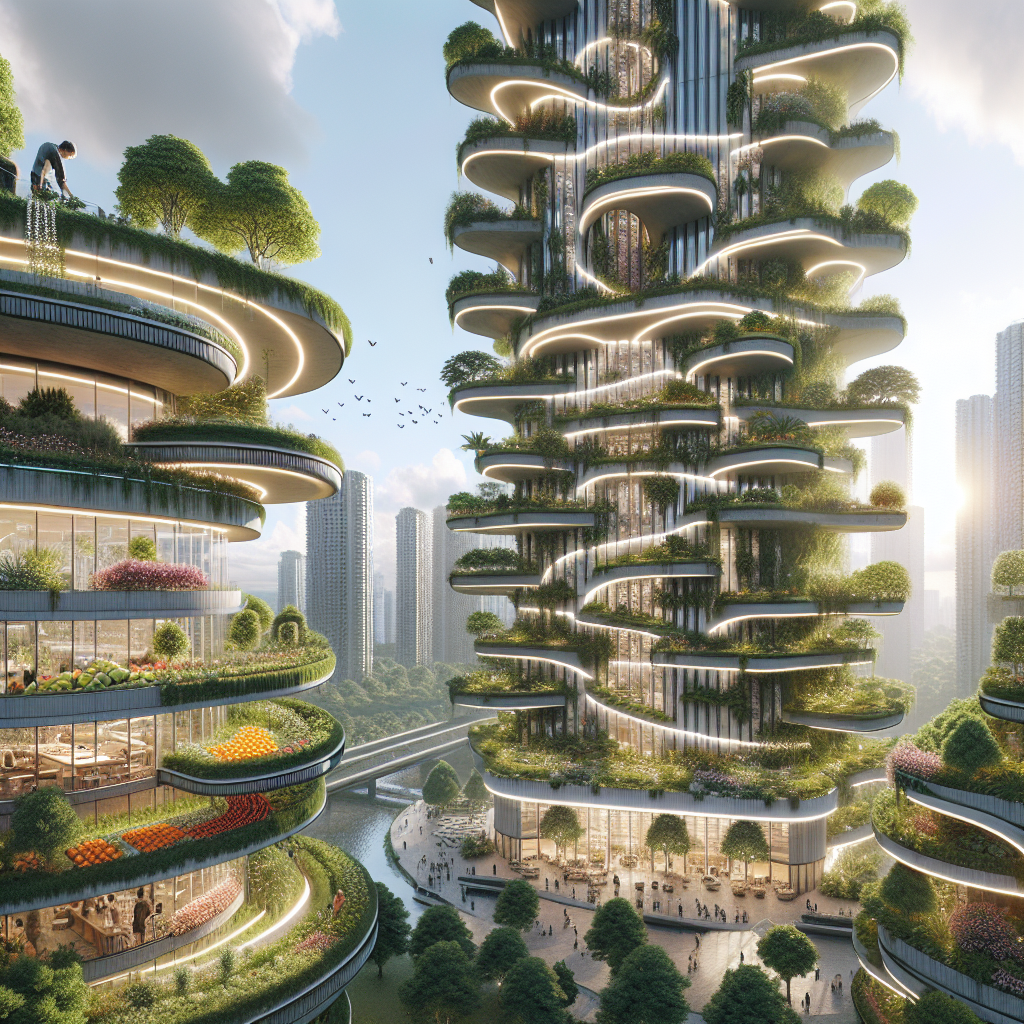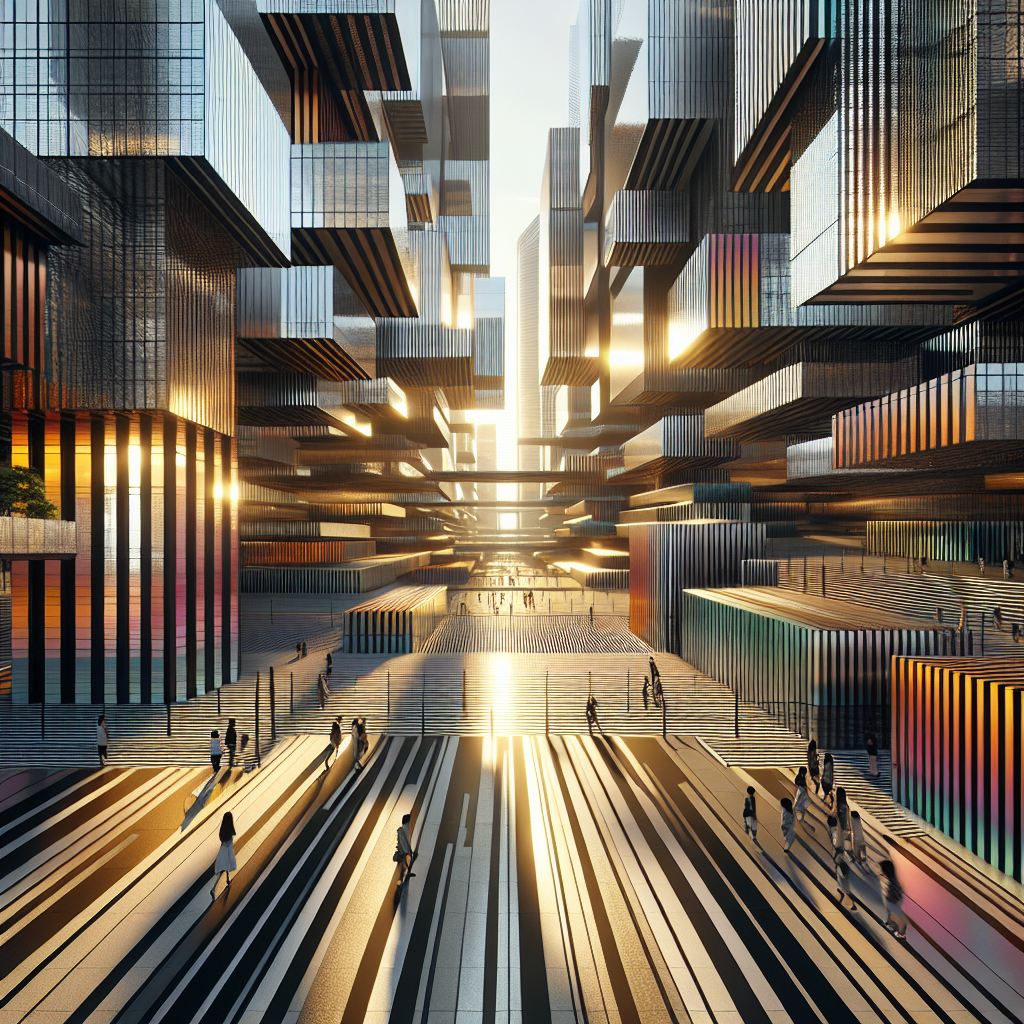Gravity orchard towers: vertical fruit farms within apartment blocks

Gravity Orchard Towers: Vertical Fruit Farms Within Apartment Blocks
Urban living has long been defined by its constraints: limited space, high density, and a disconnect from the natural cycles of food production. Yet, as cities evolve under the pressures of climate change, food insecurity, and the demand for sustainable living, architects and designers are reimagining the high-rise not only as a place to live but also as a place to grow. Enter the concept of Gravity Orchard Towers—apartment blocks that integrate vertical fruit farms directly into their structural and social fabric. This bold architectural typology merges vertical farming with residential design, transforming towers into living orchards where fruit trees cascade through atriums, terraces, and communal spaces.
The Rise of Vertical Orchards
While rooftop gardens and green façades have become familiar elements of sustainable architecture, the integration of fruit-bearing orchards into vertical housing marks a significant leap forward. Unlike decorative greenery or herb walls, fruit trees demand more space, deeper soil systems, and precise environmental control. Yet the payoff is extraordinary: residents gain access to fresh produce, reduced reliance on supply chains, and a reconnection with seasonal cycles.
According to the United Nations, over 55% of the world’s population now lives in urban areas, a figure projected to rise steadily. With urban land at a premium, embedding orchards within towers provides a solution that is both architecturally innovative and socially restorative. The orchard tower is not merely a building; it is an ecosystem.
Designing the Gravity Orchard Tower
The architectural language of a Gravity Orchard Tower is defined by vertical layering. Imagine a central atrium spiraling upwards, where tiers of citrus, fig, or apple trees are suspended in hydroponic or aeroponic systems. These orchards are irrigated through gravity-fed water channels, creating a self-sustaining cycle that minimizes energy use. Natural light is harvested through multi-level atria and reflective surfaces, ensuring that fruit-bearing canopies thrive even at higher altitudes.
Externally, the façades of these towers resemble a lush vertical orchard, with cantilevered balconies hosting espaliered fruit trees. The visual impact is striking: a living façade that shifts with the seasons, offering blossoms in spring, shade in summer, and harvest in autumn. Inside, communal orchard lounges double as gathering spaces, where residents can pick fruit directly from the branches above their heads.
Technological and Ecological Innovations
To achieve such integration, architects are drawing on advances in hydroponic farming and biophilic design. Smart irrigation systems monitor soil moisture and nutrient levels, while AI-driven climate controls regulate humidity and temperature across different orchard zones. Gravity-fed water systems reduce pumping costs, while organic waste from residents can be composted into nutrient-rich substrates for the orchards.
Ecologically, these towers serve as urban biodiversity hubs. Fruit trees attract pollinators such as bees and butterflies, enhancing local ecosystems. The orchards also improve air quality, reduce heat island effects, and provide natural shading, reducing energy demand for cooling. A study published by the World Health Organization highlights the health benefits of daily interaction with greenery, from reduced stress to improved cognitive function—benefits amplified when residents are actively harvesting fruit from their own building.
Case Studies and Emerging Prototypes
While fully realized Gravity Orchard Towers remain rare, several pioneering projects hint at their potential. In Singapore, where urban farming is actively encouraged, mixed-use towers integrate vertical farms that supply residents with leafy greens. In Milan, Stefano Boeri’s Bosco Verticale demonstrated the feasibility of high-rise forestry, though primarily ornamental. The next step is scaling from greenery to productive orchards.
Experimental prototypes in Tokyo and Rotterdam are testing orchard balconies with dwarf fruit trees grown in lightweight soil substrates. Meanwhile, architects in Copenhagen are exploring orchard atriums as part of urban farming initiatives, blending communal dining halls with harvest spaces. These early projects are shaping the design vocabulary for future orchard towers, where food production becomes as integral as plumbing or electricity.
Social and Cultural Dimensions
Beyond sustainability, Gravity Orchard Towers reframe the social dynamics of urban living. Shared orchards foster communal rituals—residents harvesting together, children learning about food cycles, neighbors exchanging recipes. The orchard becomes a civic commons within the vertical city, bridging the isolation often associated with high-rise living.
In many cultures, fruit trees carry symbolic weight: olive trees as emblems of peace, apple trees as symbols of knowledge, citrus groves as markers of abundance. Embedding these trees into apartment towers enriches the cultural identity of buildings, turning them into living landmarks that resonate with both heritage and innovation.
Challenges and Critiques
Of course, the concept is not without challenges. Fruit trees require pruning, pollination, and pest management—tasks that demand skilled horticultural oversight. There are also structural considerations: soil depth, root expansion, and load-bearing capacities must be meticulously engineered. Critics argue that the cost of maintaining orchard towers may limit accessibility, making them luxury amenities rather than widespread solutions.
Yet, as with many innovations in architecture, what begins as an exclusive experiment often evolves into a scalable model. Just as timber skyscrapers once seemed utopian but are now entering mainstream construction, orchard towers may follow a similar trajectory as technologies mature and costs decrease.
The Future of Orchard Living
Looking ahead, Gravity Orchard Towers align with broader trends in green architecture and sustainable urbanism. They represent a synthesis of food production, architecture, and community—a holistic model for resilient cities. As climate pressures intensify, cities will need to produce more of their own food locally, and orchard towers offer a poetic yet practical response.
In design terms, they challenge architects to think beyond façades and floor plans, to imagine buildings as living organisms that feed, shelter, and nurture their inhabitants. For residents, they promise not just fresher fruit but a richer, more grounded way of living in the vertical city.
A Radical Yet Rooted Vision
The Gravity Orchard Tower is not a fantasy of science fiction but a natural evolution of urban design. It draws from ancient traditions of communal orchards and gardens while applying cutting-edge technologies of vertical farming and smart building systems. It is both radical and rooted—an architecture that acknowledges the urgency of sustainability while celebrating the timeless human desire to live among fruit-bearing trees.
As the global design community seeks models for resilient, livable cities, the orchard tower stands as a compelling vision: a vertical landscape where architecture and agriculture entwine, and where the future of urban living tastes refreshingly like an apple picked from your own balcony.








